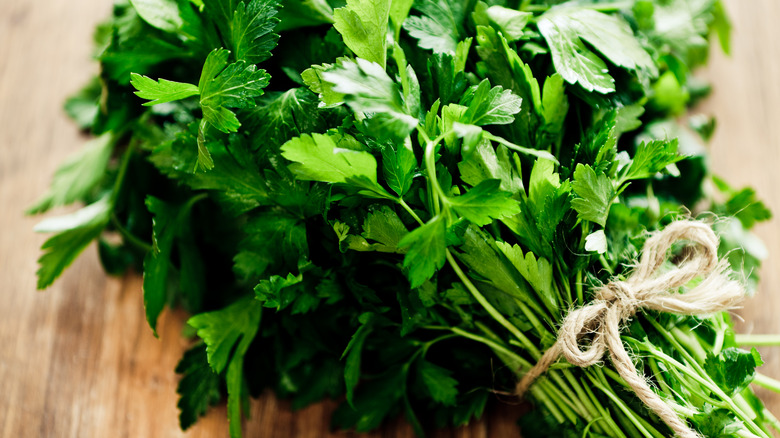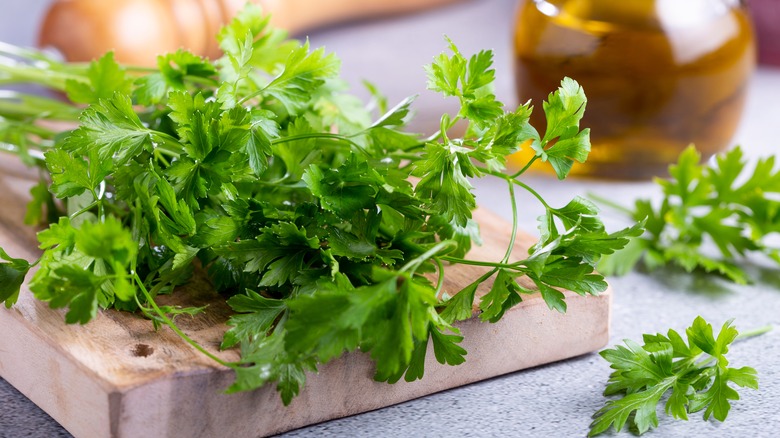The Rolling Trick For Easily Freezing Parsley
Parsley is a bright, easy-to-use herb that can act as the star of a dish, like in chimichurri sauce, or as a garnish over pasta or meat. It is available for purchase at almost any grocery store. It's also easy to grow on your own. If you find that you have more than you need, don't waste it. Believe it or not, you can actually just freeze it. To prolong its shelf life, you'll want to store parsley a little differently than you would in the refrigerator by rolling it up tightly in a sealed bag.
Parsley has earthy flavor and plenty of health benefits, so if you can find ways to integrate it into your cooking rather than tossing what's left in the trash, you'd get to reap more of its benefits. It's loaded with vitamin K, which helps with blood clotting and bones. There have even been preliminary studies that suggest it can help prevent cancer, though more research has to be done. It's also good for reducing blood pressure and maintaining eye health. Plus, it's just one calorie per tablespoon.
Roll your parsley for the best freezer storage
There is a method to freezing this herb. You want to make sure to prevent as much air and moisture as possible from getting into the parsley, or else it could lead to freezer burn. First, you'll want to wash it, but make sure to dry it thoroughly to remove all of the water. From there, put the parsley in a fully sealable freezer bag and place it all the way at the bottom. Don't seal the bag yet — tightly roll the parsley, which will help remove any remaining air. Once it's fully rolled, then seal the bag. Fresh parsley will last in the freezer for about three months.
The freezer-safe bag is necessary here because it will seal the parsley as much as possible. Avoid wrapping it just in plastic wrap or tin foil, which likely won't create an airtight seal given how fragile the herb is. Something to keep in mind: some of parsley's vibrant green color will get lost once it's frozen.
How to use frozen parsley
Frozen parsley differs from fresh in that, during the freezing process, its brightness decreases. While the parsley will still taste delicious, this means it won't be the best garnish for a dish. And if you're using it for its bright green color, you might be better off using the fresh kind. Still, that doesn't mean frozen parsley doesn't have some solid uses. For example, parsley is often used in falafel recipes, and since its color doesn't matter as much here, frozen is still a great option. Salad dressings that use a bit of parsley or sauces that call for parsley along with other herbs will also benefit from the frozen version.
Another freezing option is to add some chopped parsley and olive oil to an ice cube tray, which will give you easy individual parsley cubes. This idea is best if you plan to cook with the parsley or use it in an oil-based salad dressing, The cubes are already pre-portioned, so you can use however many you need.


